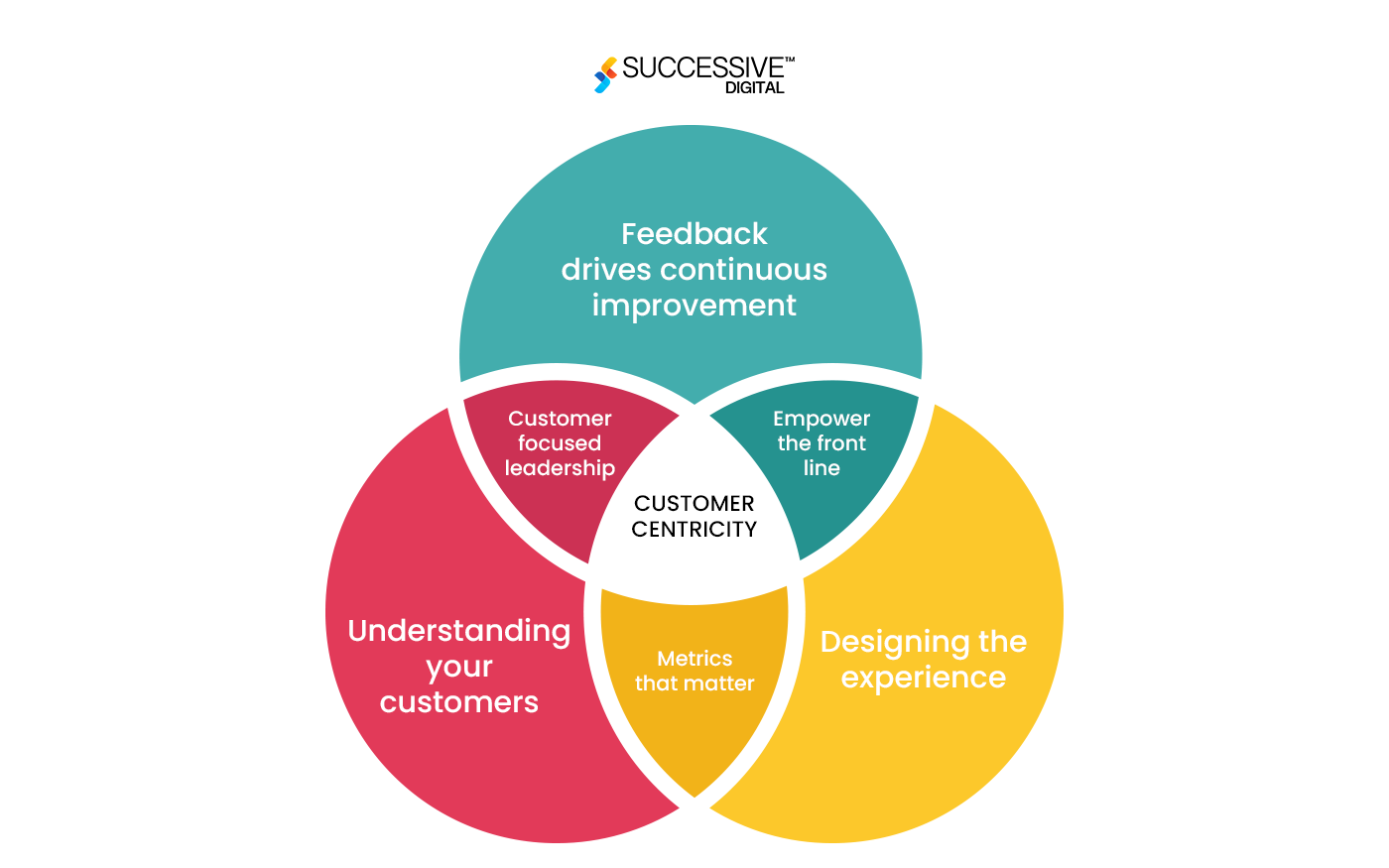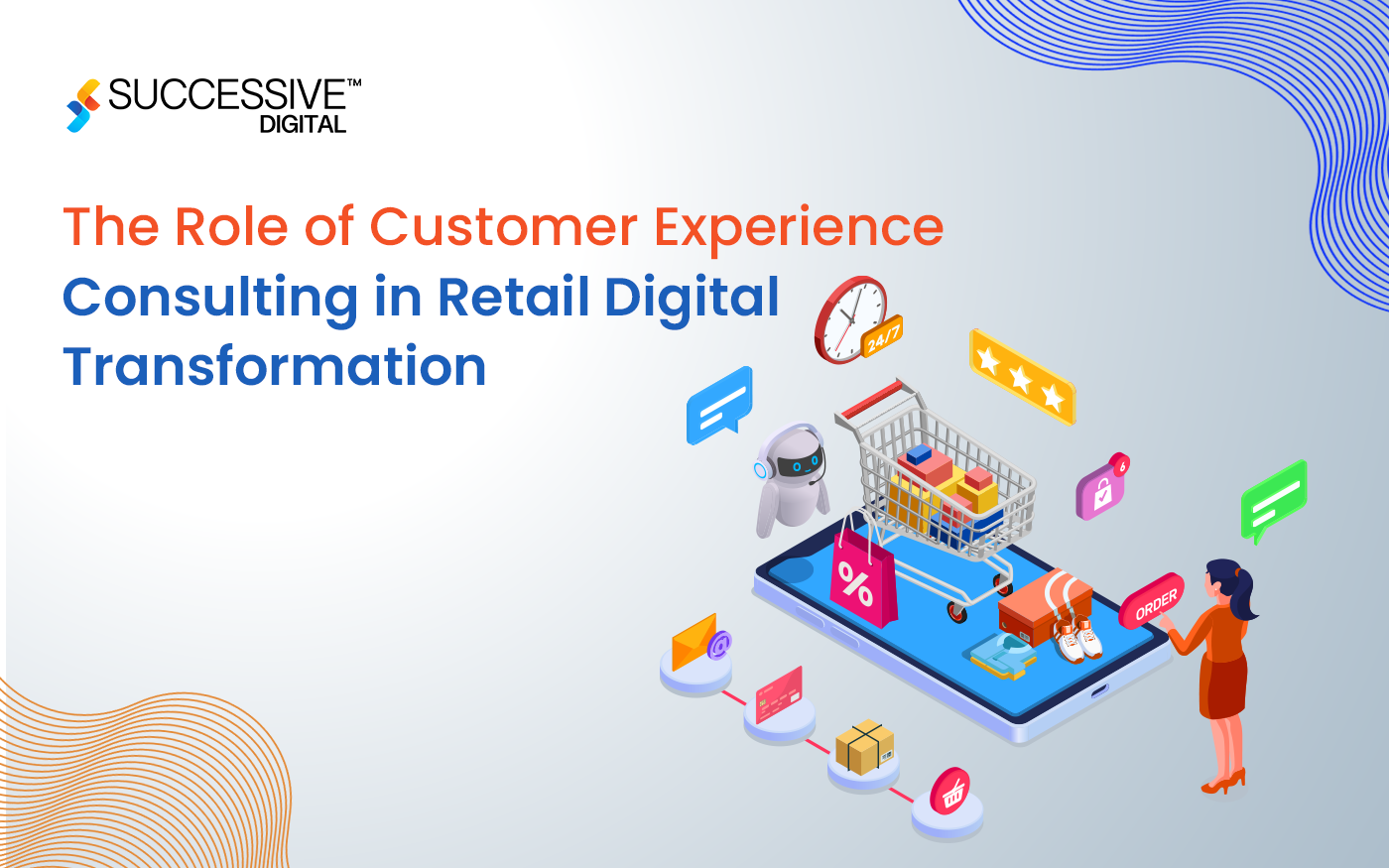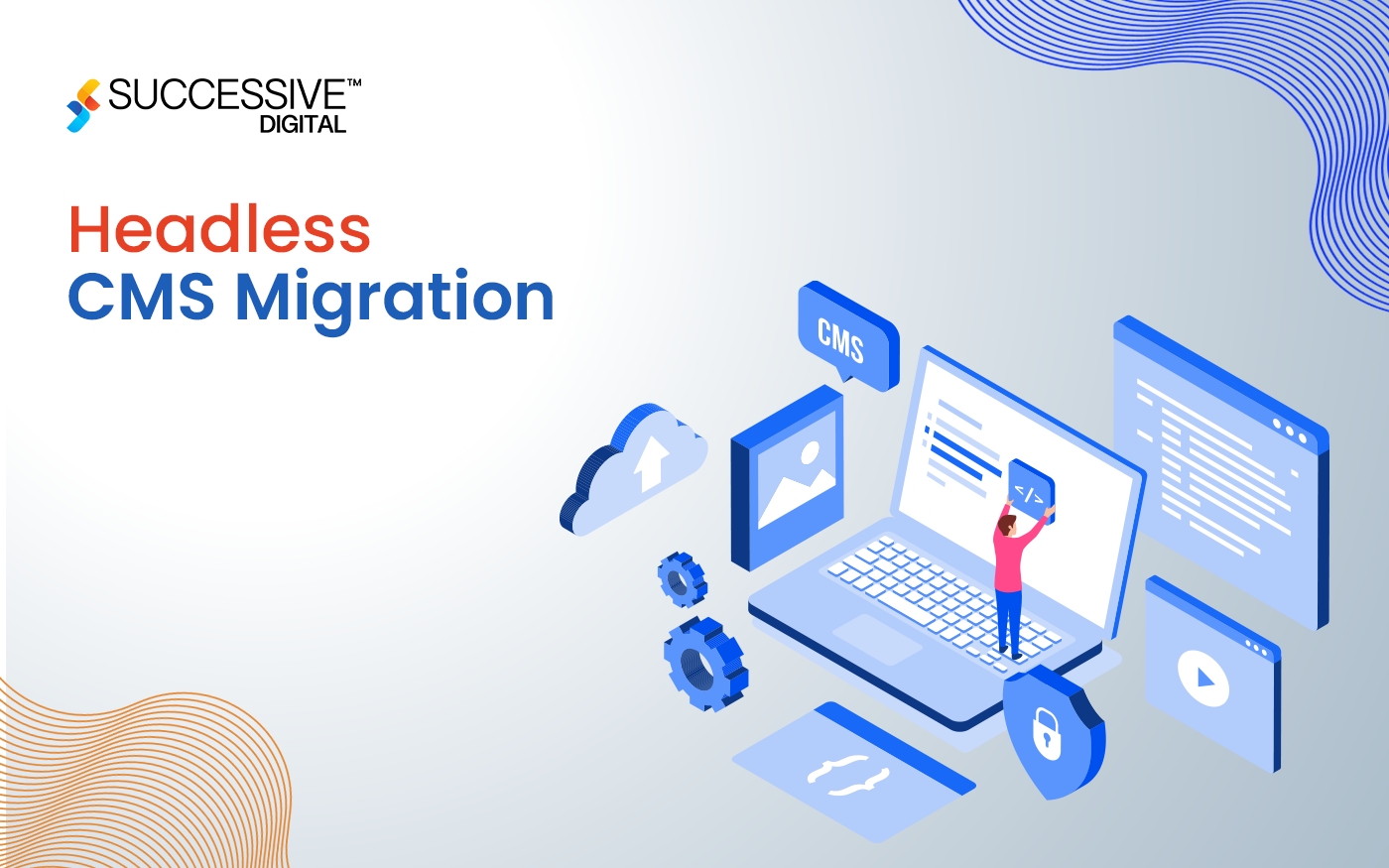In today’s dynamic global business environment, large organizations are central in supporting focused growth and development. A customer-focused culture is not always impulsiveness, but a critical, comprehensive approach that delivers fantastic products or services—creating an environment that everything in the company has made, ready for knowledge, aspiration, and exceeding the expectations of the customers. This comprehensive blog delves into how large companies can create and promote a customer-centric culture. From management principles to employee engagement strategies and program design, explore the key drivers of customer-centric transformation.
Understanding the Essence of Customer-Centricity
Before we delve deeper into the strategies, it is essential to understand what constitutes a consumer-centric environment. In between, a customer-centric culture is an organizational concept in which the customer is not always just the recipient of goods or services but makes the choices, plans, and synchronization of every interaction of that entire business enterprise the heart of this issue— from leadership in CX to front-line employees it is about delivering a common purpose.

The Pillars of Customer-Centricity:
- The Customer’s Understanding:
A deeper understanding of customer desires, possibilities, and pain factors the concerns. This includes collecting and studying customer data, engaging in research, and using approach like customer journey mapping to gain insight into their reports.
- Proactive Anticipating:
A customer-centric culture does not look at feedback—it anticipates customer preferences and issues. This requires a proactive approach to innovation, staying at the forefront of development, and constantly looking for ways to embellish the offering.
- Overall Customer Experience:
Every touch, from marketing to post-purchase support, contributes to the overall customer experience. The customer-centric lifestyle ensures a seamless and consistent journey, regardless of route or branch.
- Continuous Improvement:
Customer focus is a journey, not a destination anymore. Organizational strategy committed to this tradition embrace a continuous improvement mindset. It is important to constantly reassess strategies, identify customer feedback, and adapt to changes in market dynamics.
Strategies for Fostering a Customer-Centric Culture
Leadership as Champions of Customer-Centricity
- Leadership Strategies:
Executives and top-level management need to embody customer-centric values. They should demonstrate a commitment to consumer satisfaction, which sets the tone for the entire employer.
- Communication and Alignment:
Communicate the vision of customer-centricity throughout all degrees of the organization. Ensure that each branch understands its position in contributing to the overarching intention.
- Incorporate Customer Metrics:
Tie executive and managerial performance metrics to client delight and loyalty. This reinforces the significance of consumer-centric results in choice-making.
- Customer Feedback Loops:
Leadership in CX need to look for and reply to client concerns actively. Establishing feedback loops ensures that leadership remains informed about client sentiments and might make better decisions.
Employee Engagement for Customer Excellence
- Training and Development:
Provide thorough teaching of auxiliary-based principles. Equip employees with the skills and knowledge necessary to identify and satisfy customer desires effectively.
- Empowerment and Autonomy:
Promote a lifestyle where employees feel empowered to make choices that benefit customers. Independence allows for quick responses to user questions and issues.
- Recognition and Awards:
Employees consistently interested in good customer experience need to recognize and appreciate their contributions. Seeing customer-centric culture within the organization reinforces the importance of such moves.
- Methods of Providing Information:
Establish ways for employees to compare their insights and learning to customer interactions. Valuing their information creates a sense of ownership and participation in the customer journey.
Organizational Structure Aligned with Customer Needs
- Customer Classification:
Create departments or special teams that focus entirely on ancillary tasks. It could also incorporate dedicated customer support teams, patron experience tools, or a systematic move.
- Interdisciplinary collaboration:
Promote collaboration across departments to break down silos. Consistently simple customer satisfaction requires cooperation between marketing, sales, customer service, and capabilities.
- Agile Techniques:
Implement an agile organizational strategy that facilitates flexibility to meet customer needs. Agile methods allow for faster iterations, allowing the industry to adapt as customer expectations change.
- Data-Driven Decision Making:
Implement enterprise-wide data-driven decision-making process. Use customer data and analytics to inform strategic picks and track the impact of organizational choices on patron satisfaction.
Technological Integration for Seamless Experiences
- Customer Relationship Management (CRM) System:
Use a robust CRM system to organize customer records everywhere as part of organizational strategy. This assures that every interaction is studied with full knowledge of the customer’s history and choices.
- Automation makes it more efficient:
They are integrating production technologies to simplify repetitive processes. Automation reduces the risk of errors and allows employees to focus on other complex customer-facing responsibilities.
- AI and predictive analytics:
The leadership in CX should leverage artificial intelligence and predictive analytics to capture customer needs. This technology helps to support active customers through personalized storage.
- All-Channel Where Available:
Make sure you enjoy consistently across all channels—both online and offline. The fun must be seamless and interactive whether the customer interacts through a website, mobile app, social media, or in-store.
Continuous Measurement and Improvement
- Key Performance Indicators (KPIs):
Define and monitor customer-focused KPIs. These can also include Net Promoter Score (NPS), Patron Pride (CSAT), and Customer Retention Costs.
- Customer Journey Map:
Revisit and update customer journey maps regularly. Conduct touchpoint analysis to identify areas of improvement and innovation in the customer experience.
- Post-contact analysis:
Use a put-up-interplay survey to gather immediate feedback. These analytics provide real-time insights and can make changes quickly to improve customer experience.
- Comparison with competitors:
Compare the overall performance of your customer-centric culture process to industry competitors. Identifying areas where competitors excel or fall short provides valuable insights for organizational growth.
Instructive Customer-Centric Success
- Zappos: Putting Service Above All Else
Online shoe and clothing retailer Zappos has become synonymous with exceptional customer support. The brand’s leadership in CX prioritizes the tradition of “wow” through the offer. Zappos goes beyond traditional interactive communication to create an emotional connection with customers.
For example, Zappos is famous for customer support representatives who go above and beyond, from delivering plants to a grieving customer to spending more than 10 hours in the name of single customer support. These examples highlight the brand’s commitment to putting consumer interests ahead of short-term gains.
- Amazon: Leads the Way in Consumer-centric Innovation
Amazon is a shining example of a customer-centric culture company that redefined retail. From the beginning, Amazon’s leadership emphasized customer engagement as a bottom-up principle. The company’s commitment to providing information and exceeding customer expectations is evident in its tireless adoption of convenience, personalized recommendations, and efficient travel arrangements.
For example, Amazon’s creation of one-click shopping, customized product recommendations based entirely on surfing history, and the use of Prime, which offers fast delivery and exclusive perks, has yet to express its desire to provide customers with an easy and enjoyable experience.
- Apple: Designing with Customers in Mind
Apple’s fulfillment extends the glamor of past products; It is based on a deep understanding of the individual’s aspirations. Apple leadership famously said, “You make customers happy early, and the time lag works.” This philosophy led Apple to integrate products into customers’ lives seamlessly.
For example, Flexible layout of Apple products, human-friendly interfaces, and environments that seamlessly interact with devices demonstrate Apple’s commitment to providing a cohesive and engaging customer experience
- Netflix: Personalization and Data-Driven Content
Netflix revolutionized the leisure industry by adopting a consumer-centric approach to content delivery. Using content analytics, the streaming giant automates the indicators, ensuring that users are presented with content and information that matches their choices and viewing history.
For example, Netflix’s recommendation algorithm is a powerful engine of its organizational strategy, pushed by the system to identify it, analyzes viewing habits and choices to suggest custom content. This, most convenient, increases customer satisfaction and helps in customer retention.
Designing a Robust Customer-Centric Approach for Large Organizations
- Social Listening for Real-Time Insights
Embrace social listening tools and gather real-time insights into customer sentiment, prospects, and comments across multiple social media platforms. Managed conversations allow companies to respond directly to customer concerns and adapt strategies based on emerging trends.
Starbucks uses social listening tools for music customer feedback on social media. This proactive approach allows them to face problems immediately and incorporate customer preferences into products and services.
- Co-Creation Initiatives with Customers
Involve customers in service or product improvement processes by arranging joint visits. This creates an ownership experience for customers and assures that services align closely with their wants and expectations.
LEGO Ideas is a platform where LEGO fanatics can submit designs for brand-new LEGO units. The network votes on the models and the selected entries are treated as official LEGO units. This co-creation version could be more attractive to customers but additionally bring about a change in product services.
- Emphasizing Emotional Connections

Recognize the importance of emotional connection in building long-term customer-centric culture. Match symbolic messaging with communications to evoke striking emotions and have memorable and valuable customer experiences.
Coca-Cola’s “Share a Coke” campaign created gender-branded packaging. This simple yet powerful gesture created a real connection with customers, encouraged them to take 100 percent of their experience, and created a great feel for the whole sign.
- Empathy in Customer Interactions
Prioritize empathy in communication with all stakeholders. Train a team of front-line employees to actively listen to customer concerns, present issues, and provide solutions that align with the customer’s perspective.
The Ritz-Carlton is known for its incredible customer support, building on the philosophy of “women serving good women good women.” Individual employees are empowered to expect desirability and exceed expectations, creating a sympathetic and customized career culture.
- Implementing Customer Journey Automation
Use automation to streamline customer journeys. Applications can deliver focused communication, support music connectivity, and provide timely data, improving the happiness of the average customer.
Airbnb uses automated messaging to guide guests and hosts through the booking processes, providing essential facts and ensuring a smooth experience. This automation supports exchanging information in a green and beautiful human experience.
Evolving Towards Customer-Centric Excellence
As companies take bold steps to build a customer-centric culture, a combination of real-world models and forward-looking strategies will be instrumental in exploring the success. Companies like Amazon, Zappos, Apple, and Netflix provide valuable insight into the actual value of customer-centric approach for succeeding in today’s competitive landscape.
Adapting and innovating based on customer preferences in a rapidly evolving business environment is a hallmark of coping with competition and enduring sustained outcomes. Employee commitment, employee engagement, coherent organizational structure convergence, technology integration, and outcomes management foster better results.
Empathy in customer interactions, personalization, and data-driven decision making by inserting insights into board-level execution, organizations can go beyond mere interactive communication to build lasting relationships, fostering a deeper and more significant engagement with their customers.
As the customer-centric process evolves, companies must be agile, responsive, and committed to values that place the customer so the heart of every choice and every action. In doing so, they do not just meet the customer expectations but exceed them, turning happy customers into supporters and advocates of the brand.












